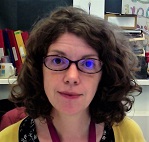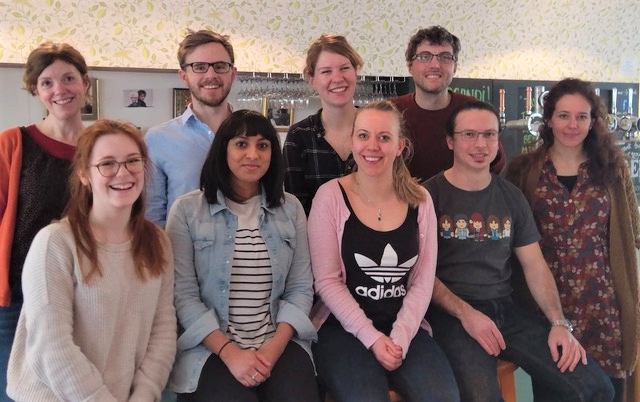Kelly Douglas and Nick Mullin tell us about the garden at the Centre for Regenerative Medicine, which is tended regularly by volunteers.
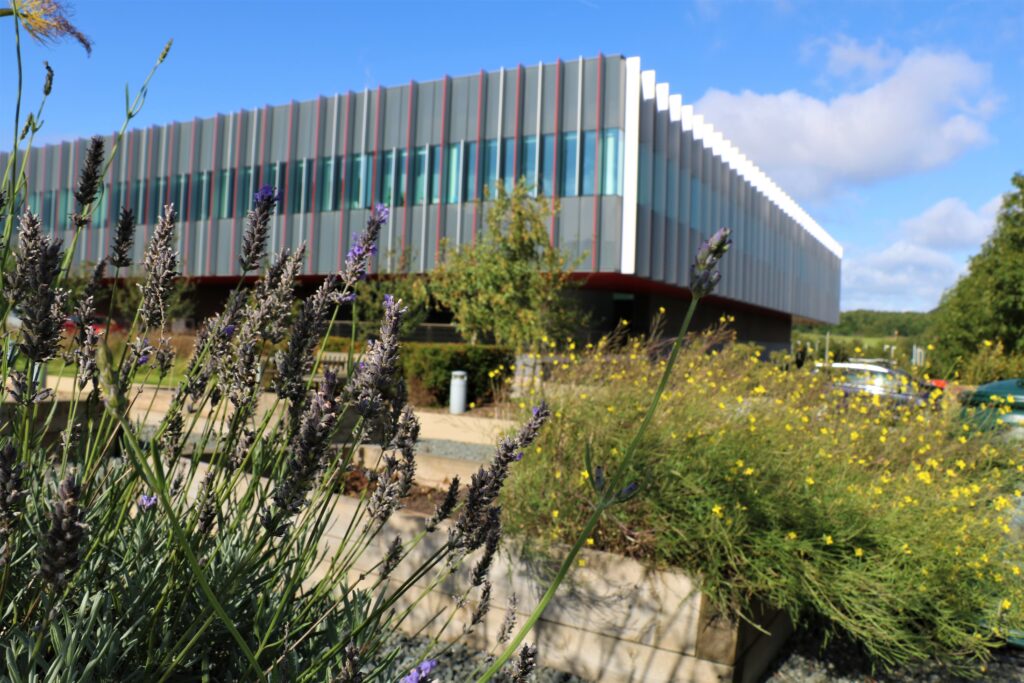
Not many lab or office based workplaces offer the opportunity to spend time during the working day in a garden environment, but here at the Centre for Regenerative Medicine (CRM) we are lucky to have that chance.
At the rear of the building is the CRM garden which contains a mix of habitats and environments, which have been created to be enjoyed by all students and staff.
As well as formally planted beds, there are wildflower and grassed areas all of which back onto the waterway. Scattered throughout are picnic tables and benches which offer the chance to sit and enjoy a few minutes in the blistering Scottish sunshine while watching the world going by.
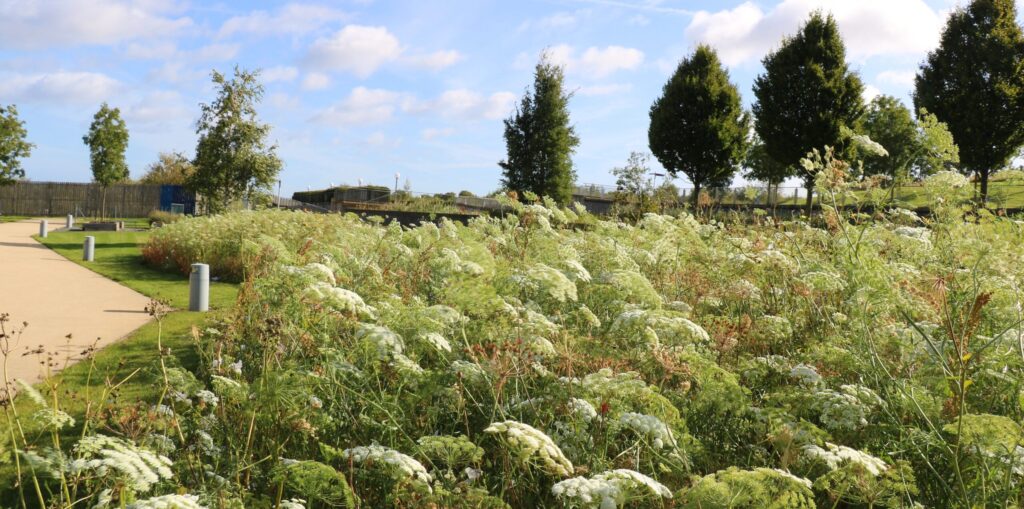
Encouraging wildlife
For those who do take advantage of the garden, you only have to sit and watch for a few minutes to see a variety of wildlife. In particular there are a number of different bird species that can be seen or heard. These include great tits, blue tits, goldfinches, greenfinches, robins, pheasants, skylarks, crows, jackdaws, buzzards, kestrels and in the last few weeks a peregrine falcon has been spotted around the site.
As well as using the garden to feed our feathered friends, the installation last year of bird boxes meant that there were breeding birds in the garden and in June the first successful fledging of CRM baby birds occurred. Hopefully this year we can all be around to actually see the boxes get used.
As well as the birds, there are rabbits and foxes although you may have to sit a bit longer at the right time to catch sight of these. Our wildflower areas encourage insects of many varieties, especially our local bees who we rely on to pollinate our crops.
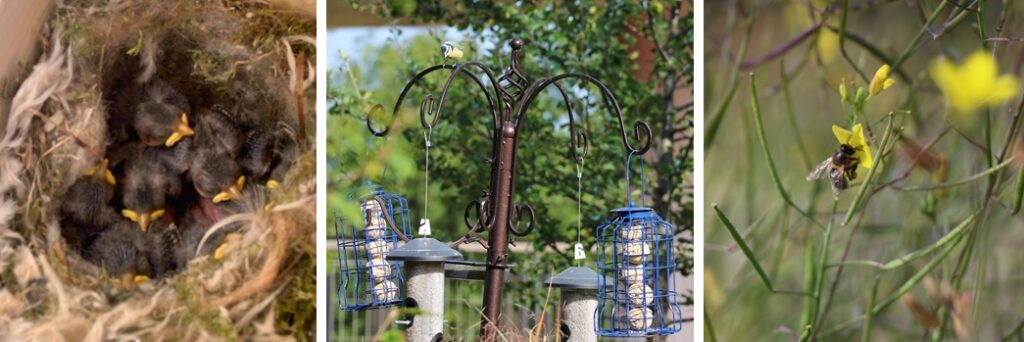
Growing crops
In addition to the chance to enjoy wildlife, the six raised beds at the end of the garden offers an opportunity that is unique at Little France, the chance to grow fruit and vegetables.
Given that the current waiting list for an allotment in Edinburgh is around the 7 year mark, the chance for people to be able to grow produce is one that is very much appreciated by the current gardeners. Over the last 12 months these beds have been used to grow potatoes, courgettes, leeks, kale, onions, carrots, spring onions, garlic, peas, beans, rocket, strawberries and raspberries as well as a selection of herbs.

There are also fruit trees which have previously provided sufficiently good crops to allow the brewing of the first ever CRM cider. To refresh our ‘pressers’ mint from the garden was used in our ‘mocktails’, as part of our garden party in 2019 (event to be resurrected as soon as possible!).

Improving wellbeing
After a long, cold and difficult winter we are looking forward to getting back out in the garden and starting to plant again.
The amount of work involved in growing fruit and vegetables is not huge and the more people that are involved the greater the division of labour.
The experience of getting out in the fresh air, bending your back and tending the beds is rewarding. The rewards are more tangible when you get to eat delicious, fresh, organically produced fruit and vegetables.
Gardening is also widely recognized as an excellent form of exercise and a means of decreasing stress and increasing mental health. The ability to break up the day with a few minutes of pruning followed by stepping back to admire your work, or the chance to take out the frustrations of the day on weeds is a great way of keeping on top of the stresses and strains of our daily lives.
Get Involved
We have new exciting plans for 2021, with discussions commenced to install hedgehog hotels with support from Social and Responsibility department. Our planting plan for 2021 has commenced, with aim to grow the most quality produce possible within the year.
The chance to be involved in the garden to share its benefits is open to all university staff and students who work or study at the Bioquarter campus. If you want to get involved email crm.wellbeing@ed.ac.uk to request access to the Sharepoint site, where news, views and a jobs list is maintained.
The kitchen garden was set up as part of the centre’s sustainability and wellbeing initiative.
Find out more at https://www.ed.ac.uk/regenerative-medicine/about/equality-diversity-wellbeing
